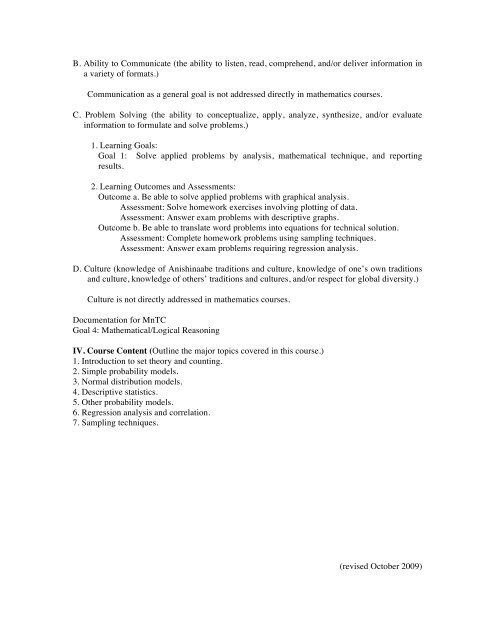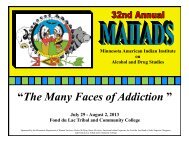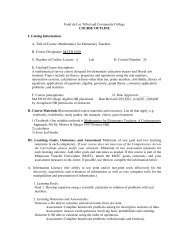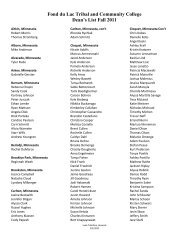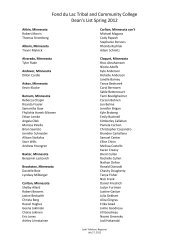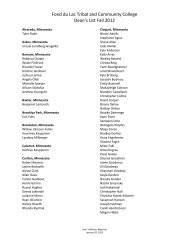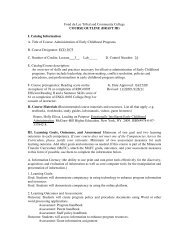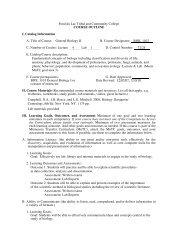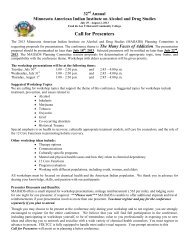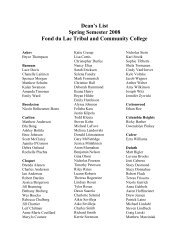MATH 1030 Introduction to Statistics - Fond Du Lac Tribal and ...
MATH 1030 Introduction to Statistics - Fond Du Lac Tribal and ...
MATH 1030 Introduction to Statistics - Fond Du Lac Tribal and ...
Create successful ePaper yourself
Turn your PDF publications into a flip-book with our unique Google optimized e-Paper software.
B. Ability <strong>to</strong> Communicate (the ability <strong>to</strong> listen, read, comprehend, <strong>and</strong>/or deliver information in<br />
a variety of formats.)<br />
Communication as a general goal is not addressed directly in mathematics courses.<br />
C. Problem Solving (the ability <strong>to</strong> conceptualize, apply, analyze, synthesize, <strong>and</strong>/or evaluate<br />
information <strong>to</strong> formulate <strong>and</strong> solve problems.)<br />
1. Learning Goals:<br />
Goal 1: Solve applied problems by analysis, mathematical technique, <strong>and</strong> reporting<br />
results.<br />
2. Learning Outcomes <strong>and</strong> Assessments:<br />
Outcome a. Be able <strong>to</strong> solve applied problems with graphical analysis.<br />
Assessment: Solve homework exercises involving plotting of data.<br />
Assessment: Answer exam problems with descriptive graphs.<br />
Outcome b. Be able <strong>to</strong> translate word problems in<strong>to</strong> equations for technical solution.<br />
Assessment: Complete homework problems using sampling techniques.<br />
Assessment: Answer exam problems requiring regression analysis.<br />
D. Culture (knowledge of Anishinaabe traditions <strong>and</strong> culture, knowledge of one’s own traditions<br />
<strong>and</strong> culture, knowledge of others’ traditions <strong>and</strong> cultures, <strong>and</strong>/or respect for global diversity.)<br />
Culture is not directly addressed in mathematics courses.<br />
Documentation for MnTC<br />
Goal 4: Mathematical/Logical Reasoning<br />
IV. Course Content (Outline the major <strong>to</strong>pics covered in this course.)<br />
1. <strong>Introduction</strong> <strong>to</strong> set theory <strong>and</strong> counting.<br />
2. Simple probability models.<br />
3. Normal distribution models.<br />
4. Descriptive statistics.<br />
5. Other probability models.<br />
6. Regression analysis <strong>and</strong> correlation.<br />
7. Sampling techniques.<br />
(revised Oc<strong>to</strong>ber 2009)


